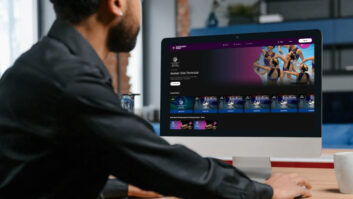
Discovery and Sky have restated their intent to stay with 3DTV while the content proposition remains on movies, specials and live events. It’s been two years since the world’s first 3DTV channels launched in a blaze of publicity, but the industry has not managed to translate its enthusiasm for the format to consumers in high enough numbers, prompting many advocates to reign in their expectations. Take the Sky 3D channel, which launched in the UK in October 2010, and has accrued 250,000 Sky subscribers. BSkyB prides itself on pioneering new technology, it has invested heavily in production equipment (primarily OB facilities for live 3D sports) and has always described its 3D activity as core to attracting consumers to the brand rather than a profit centre in its own right. “Growth in 3D has been pretty much as expected,” said Chief Operating Officer Mike Darcey. “Take-up is linked closely to the sale of 3DTV sets, which in turn is linked to the cycle of TV replacement, which has slowed due to the economy. An improved consumer environment will help and will be progressed further as prices come down and as glasses-free displays emerge.” Another high-profile 3D leader, Discovery Communications, has no imminent plans to replicate 3Net (its 3D channel co-run with Sony and Imax in the US) in Europe but emphasises it isn’t leaving the game either. “3DTV set sales are not going as fast as HD did and the biggest hurdle is the need to wear glasses, but autostereo displays will come,” says John Honeycutt, EVP and COO, Discovery Networks International. “We’ve learned a lot about how to produce in 3D and to tell a story in 2D as well as 3D in a way that drives down cost. We’ve confirmed that if consumers have an opportunity to watch content that is closer to reality they will migrate toward that. So as the market develops we are right there and ready to go.” His boss, DNI Chief Executive Mark Hollinger, confirms the company is “still very bullish” about 3D and that “the exact trajectory will be unpredictable but our investment horizon is long term. The consumer platform for strong 3D business is getting established.” The lack of 3D content has been a stumbling block for the industry as a whole but particularly for payTV operators. Canal Plus cited the limited availability of 3D content alongside slow subscriber uptake (20,000) as the key factors behind the termination of its 3D linear channel in January. DirecTV, which launched 24-hour channel n3D in partnership with Panasonic in 2010, drastically scaled back its commitment in July, slashing the budget for production of content and citing lack of audience demand. The London Olympics has not had a significant impact on the uptake of 3D TV sets or 3D services. Indeed, there have been several reports of disappointing viewing figures of BBC’s Olympics coverage in 3D. According to the BBC just 66,000 people watched the 100m final in 3D despite the fact that it was available free to air and that well over 1m UK homes now own a 3DTV. “This may well be down to the fact that the 100m is a very short event and therefore many people may not want the hassle of switching to the 3D channel and putting on the glasses,” noted Futuresource analyst Amy Martin. “However, viewing figures of other sports events in 3D from the BBC (including the Wimbledon final) have been low and it seems that specialised 3D video and certain 3D movies are the most popular forms of 3D content.” Instead, it’s a waiting game. Waiting for decent quality and mass produced glasses free screens. Predicts Martin: “Passive 3D is gaining share versus active shutter and enables the feature to be offered on a wider product range at lower prices, and within 3-4 years we expect auto-stereo or glasses-free sets to start displacing active shutter at the high-end of the market.” All the major consumer electronics brands are investing in it, with Dolby making considerable splash at NAB2012 with its full HD autostereoscopic display technology devised with Philips Research. The latter developed a receiver and lens array to optimise the display of glasses-free 3D content compressed with Dolby’s codec over any size screen or device. The first commercial models are expected in 2013, according to Dolby. These though will be high-end models, so the 3DTV industry will have to bide its time until the latter half of the decade for business to improve. By Adrian Pennington







